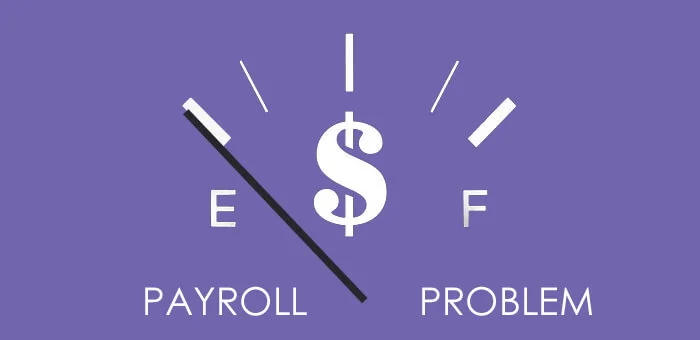Committed Vs. Uncommitted Line Of Credit: What's The Difference?

Securing reliable access to funds is vital for businesses, especially when navigating fluctuating cash flows. Understanding the differences between a committed line of credit and an uncommitted line of credit is key to choosing the right financial tool.
These two options offer varying levels of flexibility, obligations, and risk, directly impacting your financial planning. This article breaks down committed vs uncommitted line of credit, exploring how they operate, their advantages, and the best use cases for businesses of different sizes.
What Is a Committed Line of Credit?
Securing reliable access to funds is vital for businesses, especially when navigating fluctuating cash flows. Understanding the differences between a committed line of credit and an uncommitted line of credit is key to choosing the right financial tool.
These two options offer varying levels of flexibility, obligations, and risk, directly impacting your financial planning. This article breaks down committed vs uncommitted line of credit, exploring how they operate, their advantages, and the best use cases for businesses of different sizes.
What Is an Uncommitted Line of Credit?
An uncommitted line of credit offers more flexibility for both the lender and borrower. Unlike a committed facility, the lender is not obligated to advance funds upon the borrower’s request. Instead, funding decisions are made on a case-by-case basis, depending on factors such as the lender’s liquidity and the borrower’s creditworthiness at the time of the request.
Uncommitted lines of credit are often used for short-term or temporary funding needs. For instance, a business facing unexpected expenses may use an uncommitted facility for a quick cash injection. However, since the lender has no binding obligation to provide funds, businesses relying on this type of credit may face uncertainty.
While uncommitted credit lines typically involve fewer fees and less stringent terms than committed ones, their lack of guaranteed funding can be a drawback for businesses requiring financial predictability.
Key Differences Between Committed and Uncommitted Lines of Credit
Understanding the distinctions between committed and uncommitted lines of credit is essential for choosing the right financing solution. These options differ in lender obligations, flexibility, and suitability.
Obligation of the Lender
The primary difference lies in the lender’s obligation. In a committed line of credit, the lender is legally required to advance funds once conditions are met. In contrast, an uncommitted line of credit leaves the decision to the lender, allowing them to decline requests even if the borrower qualifies.
Flexibility and Terms
The primary difference lies in the lender’s obligation. In a committed line of credit, the lender is legally required to advance funds once conditions are met. In contrast, an uncommitted line of credit leaves the decision to the lender, allowing them to decline requests even if the borrower qualifies.
Use Cases
Committed lines of credit are ideal for businesses with ongoing or predictable funding needs, such as meeting payroll or financing inventory. Uncommitted credit lines are better suited for temporary funding requirements or unforeseen expenses, offering businesses quick access to funds when approved.
Benefits of a Committed Line of Credit
A committed line of credit provides financial security, making it a reliable option for businesses managing regular expenses or long-term projects. The guaranteed availability of funds reduces the risk of cash flow disruptions, which is particularly beneficial for businesses that rely on consistent cash flow to meet obligations.
For instance, companies working with payroll partners often prefer committed facilities to maintain timely payments. The predictability of these credit lines ensures they can support employee wages even during periods of low revenue.
Committed credit lines also enable businesses to plan with confidence. With predefined terms, borrowers can align their repayment schedules with projected cash inflows, maintaining financial stability without compromising growth opportunities.
Benefits of an Uncommitted Line of Credit
The flexibility of an uncommitted line of credit makes it an attractive option for businesses with intermittent or unpredictable funding needs. Since the terms are less rigid, borrowers can negotiate conditions on a case-by-case basis, adapting the facility to their immediate requirements.
This type of credit is particularly advantageous for businesses that occasionally face unexpected expenses but do not need ongoing access to large sums. For example, a company handling a one-time equipment repair may use an uncommitted line of credit to cover the cost without committing to a long-term repayment plan.
Uncommitted facilities typically involve lower fees compared to committed lines of credit. However, the trade-off is funding uncertainty, which may not suit businesses that depend on reliable financial support.
At Payro Finance, we specialize in providing payroll funding solutions tailored to your business needs. Our services bridge cash flow gaps, allowing you to meet payroll deadlines without stress.
Unlike factoring or traditional credit lines, our funding is designed for payroll, offering a streamlined and affordable approach to keeping your team paid on time.
Morris Reichman
hello@payrofinance.comMorris Reichman is the founder and CEO of Payro Finance. Former Vice President at Infinity Capital Funding an alternative finance company, Morris possesses a versatile background in the finance industry. Having spent 7+ years working across global macro operations and start up corporate finance Morris's expertise is in business accounting, risk management and investment analysis. Morris founded Payro Finance to support business owners and ensure their business continuity.
Need a short-term loan to cover payroll?
Apply in under two minutes, and get approved within 2 days. Once approved, funds are in your account the same day.
- Always 1.5% weekly
- Up to $500,000
- Same-day funding


